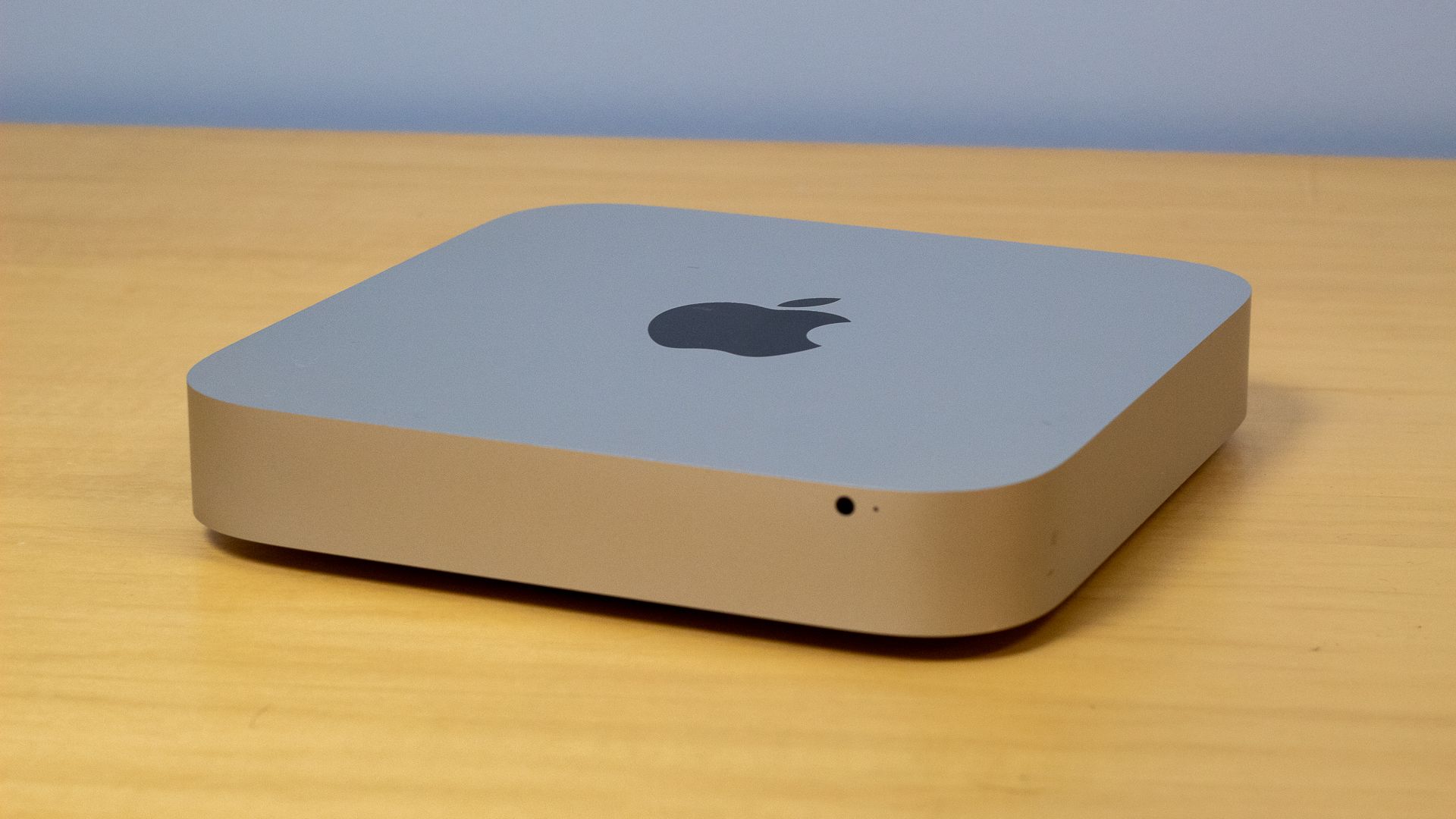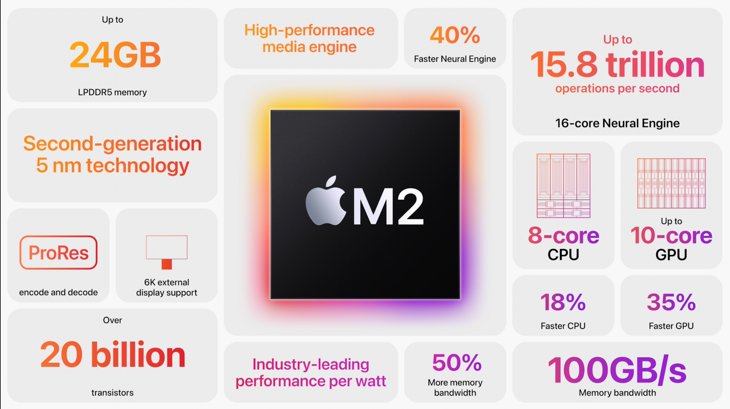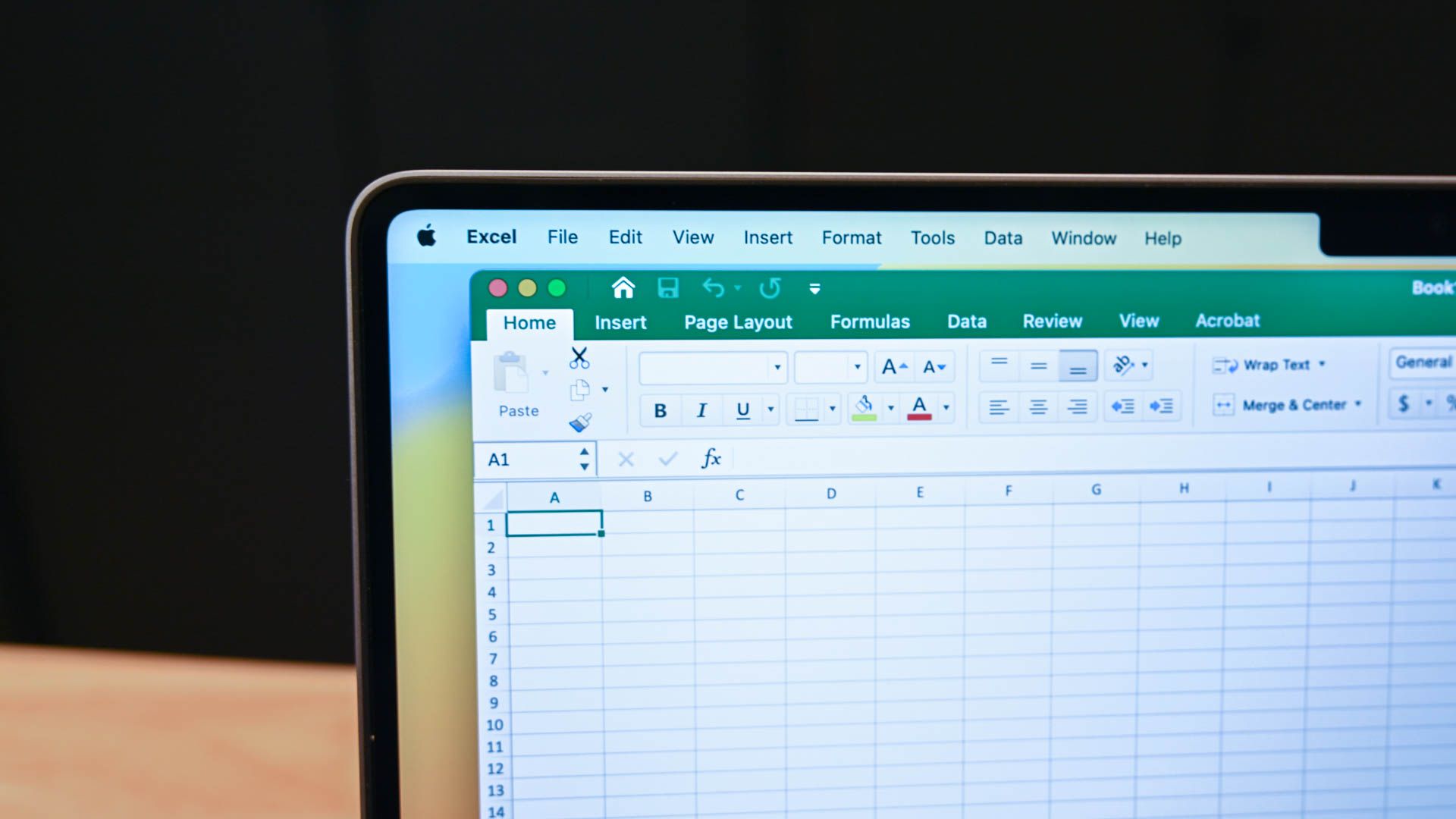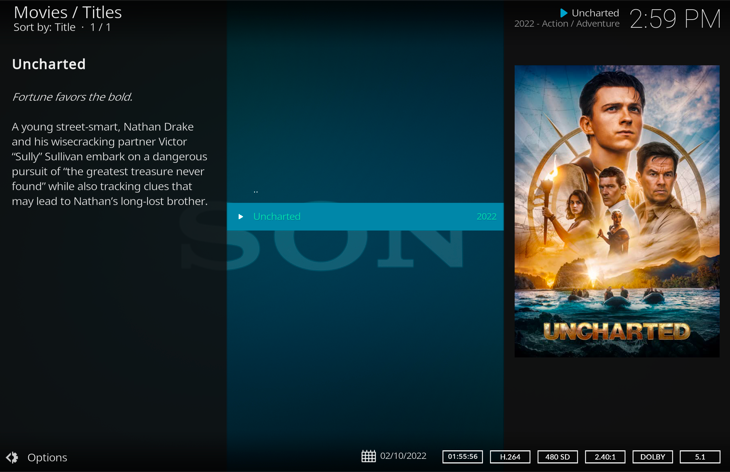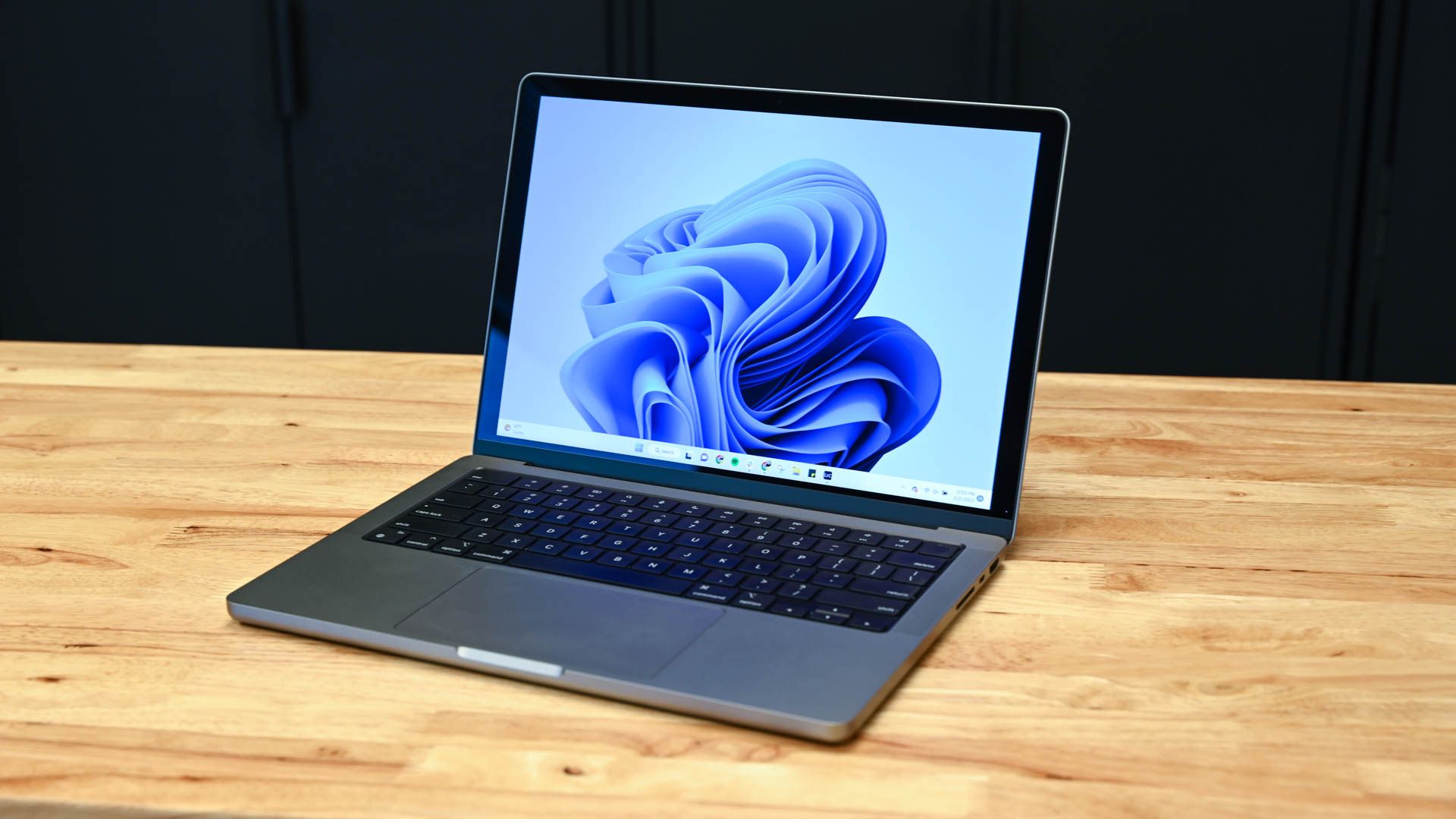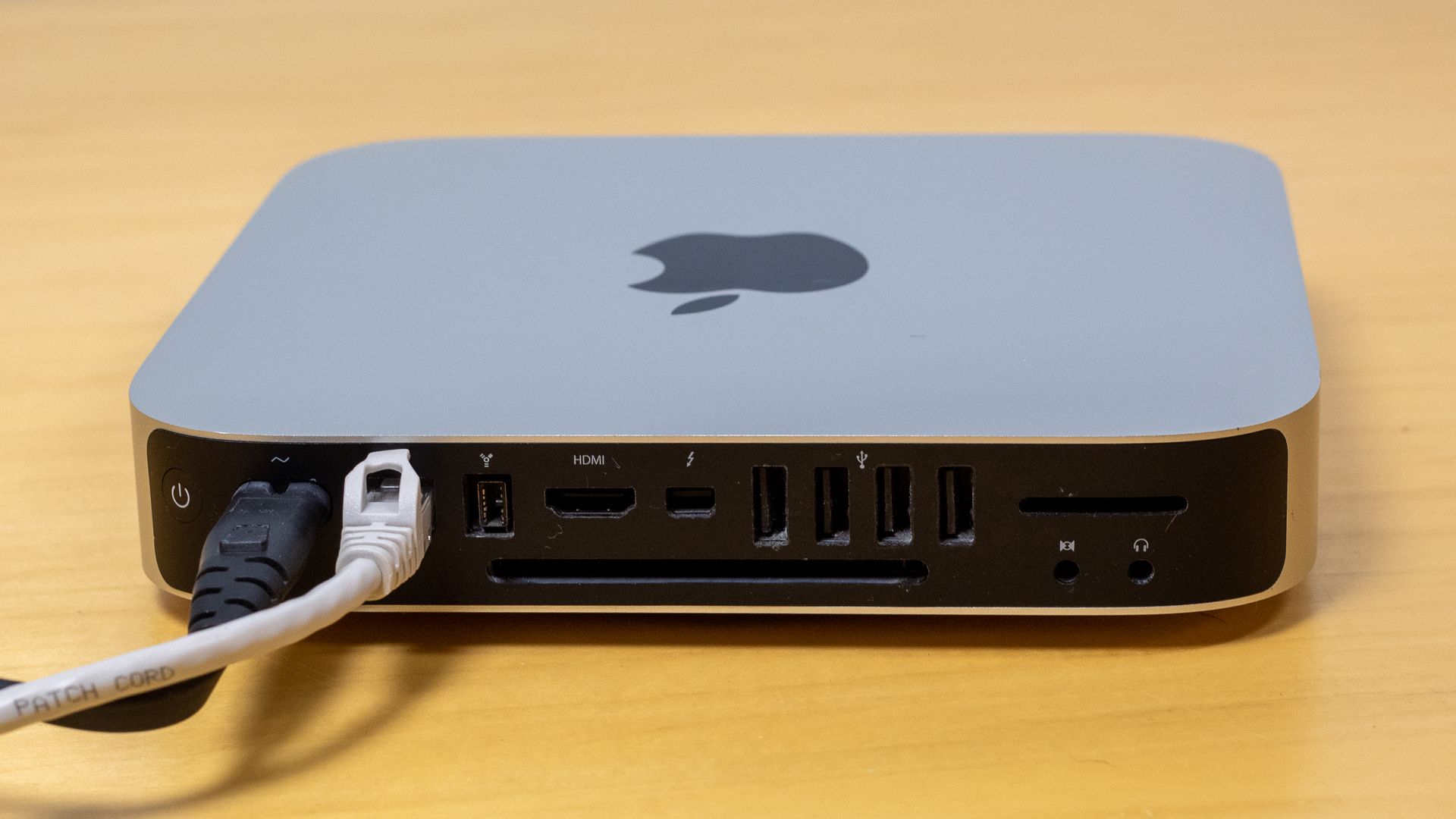Quick Links
Looking for a compact office machine, media center, file, and media server, or even something on which to play a few games and edit some video? Look no further than Apple's Mac mini.
A Lot of Computer for the Money
Starting at $599, few Windows or Linux mini PCs can rival the Mac mini's raw performance at this price point. For your money, you'll get an M2 Apple Silicon ARM-based system-on-chip with an 8-core CPU, 10-core GPU, 8GB of unified RAM, and a 256GB solid-state drive. The Mac mini lacks peripherals like a keyboard or mouse, which helps to keep the cost down.
The Mac mini is ideal for most computing tasks. For context, a $599 Mac mini is comparable to a base-level $1199 MacBook Air. If you don't need the laptop form factor, have a display you can already use (or are plugging into a TV), and can bring peripherals of your own it's a great way to save money on a performant pocket-sized PC rival. Just remember that you can't upgrade the internal drive (or anything else), so it's important to buy enough storage and RAM up-front.
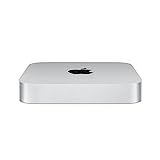
Apple Mac Mini M2 (2023)
With an 8-core CPU and 10-core GPU, 8GB of unified RAM, a 256GB SSD, and Gigabit Ethernet on-board, the M2 Mac Mini is one of the best-value small computers you can buy.
Upgrading to 512GB of storage or adding another 8GB of RAM adds $200 to the purchase price. While the value proposition isn't quite so good when you start customizing things, a souped-up M2 Pro Mac mini with a 10-core CPU, 16GB of RAM, and 512GB of storage that sets you back $1299 can fly through more demanding tasks. The improved chip handles three external displays, adds two more Thunderbolt 4 ports, and is just as whisper-quiet as the cheaper model.
Of course, there are cheaper mini PCs on the market, with budget options like the Beelink U59 Pro often breaking the sub-$200 barrier. The weak link in these cheaper models is often the CPU, which features far lower core counts, disappointing on-board graphics, and little in the way of dedicated silicon for media encoding and machine learning tasks.
The Mac mini is the cheapest Mac, period. That also makes it a good jumping-on point for anyone who wants to give macOS a shot without dropping MacBook levels of money. Save even more money by opting for a second-hand M1 Mac mini.
Does (Almost) Everything You Want It To
With Apple's M2 chip (or better) at the helm, the Mac mini (and even the older M1 Mac mini) is a force to be reckoned with in most common tasks. It's plenty powerful enough for browsing the web, word processing and other office tasks, some web and app development, and even more demanding tasks like photo and video editing.
Apple has included dedicated video encode and decode engines in the M2. This includes hardware-accelerated H.264, HEVC, ProRes, and ProRes RAW playback, which means that there is silicon on the chip designed purely with these formats in mind. The base M2 chip also includes encode and decode engines for ProRes, Apple's video format aimed at pro-level creators.
If you're going to be doing a lot of video editing you might want to spring for an M2 Pro or even an Apple Studio model instead, but the media engine has other uses. The Mac mini would make a highly capable media center PC, chewing through high-bitrate 4K HDR video and remaining quiet while doing so. The Neural Engine helps with machine learning tasks, like searching your Photos library, talking to Siri, or enhancing images.
While we don't advocate buying a Mac specifically for gaming, Apple Silicon processors are emulation powerhouses. You can comfortably emulate relatively modern systems like the Microsoft Xbox, Nintendo Wii, and Sony PlayStation 2 as well as arcade classics and early home consoles. You can also run Steam and 64-bit Mac-native games, play classic source ports, and Apple Arcade titles.
The Case for Using macOS
You're probably thinking "but I don't use macOS," and while that's a fair concern, Apple's operating system might not be the nightmare you're envisioning, even though the company has a particular way of doing things. The most important thing to remember is that macOS and Apple's Mac lineup aren't locked down in the same way that mobile platforms like the iPhone and iPad are.
macOS is a proper desktop operating system. Initially based on NeXT, the UNIX base at its core delivers one Linux-levels of stability in an arguably more user-friendly package than Windows. You can still get your hands dirty if you know what you're doing. Terminal is there for using the command-line, Automator lets you build complex workflows, Activity Monitor lets you see how your resources are being used, you can diagnose problems with the Console app, not to mention the wealth of third-party tools that are available.
If you primarily use a PC you'll be glad to hear that Windows mainstays like Office, Edge, password managers like 1Password and Dashlane, and most popular third-party apps like Discord and Spotify have Mac versions available. While macOS might not be your platform of choice, data will sync between these services over the cloud so you can use them just as you do on Windows.
macOS is indeed a little more restrictive thanks to features like System Integrity Protection, but this also improves security. Mac malware still exists, but you probably don't need an antivirus.
You'll get yearly upgrades to the core operating system, which means you'll get a new version of macOS each fall. Your Mac will be supported for at least five years, often longer. Failing this you can go your own way and install unsupported versions of macOS regardless of what Apple says.
Perhaps the most important thing to keep in mind is that you may never even see the base operating system, depending on what you're using your computer for. This may be the case if your Mac mini is powering a media center with Kodi, stuck in a cupboard running a media server like Plex, handling your torrent downloads via a web interface, or running an emulator front-end like RetroArch.
The Case for Running Windows and Linux Too
Apple Silicon has proved itself a worthy replacement for the Intel chips the company used in the past. Not only are these chips more efficient in terms of power usage and heat output, but they're also capable of running more than just Apple's operating system.
Thanks to Microsoft's Windows on ARM project, it's possible to run Windows on your Apple Silicon Mac at near-native speed. Since Microsoft added 64-bit app support to the ARM flavor of Windows, the vast majority of Windows apps run on Apple hardware with an M1 or better processor. The easiest way to do this is using Parallels Desktop, but there are other ways of running Windows on your Mac.
Virtualization can also be used to run other operating systems including ARM-native versions of Linux like Ubuntu, Fedora, and Kali. Alternatively, it's now possible to run Linux natively on Apple Silicon thanks to the Asahi Linux project. M2 support was added in a July 2022 update, and though the project isn't quite ready for mainstream adoption (at the time of writing), it's well on its way.
Native Linux support is possible because Apple allows the booting of unsigned kernels on its Apple Silicon processors. This is not the case on devices like the iPhone and iPad, which are restricted to Apple's own operating system releases. You don't need to jailbreak your Mac to run non-Apple operating systems, though there is a fair bit of reverse engineering involved.
This means that it's possible that Windows for ARM could run natively on Apple Silicon, but Apple says the ball is in Microsoft's court.
Small, Flexible and Efficient
There's a lot to like about the Mac mini, right down to the form factor. You can easily mount a Mac mini on the back of a monitor but it looks so good you might not mind having it sitting on your desk.
Your input and output (I/O) options are plentiful, even on the base model. There's built-in Gigabit Ethernet (upgradeable to 10 Gigabit Ethernet at checkout for $100), two Thunderbolt 4 (USB-C) ports, an HDMI 2.1 port, 3.5mm stereo output, and two increasingly rare USB-A ports. Thunderbolt is especially useful for expanding your storage options with hubs or even a dedicated RAID enclosure.
The Mac mini works well with the vast majority of your existing peripherals, including keyboards and mice designed with Windows in mind. Use most standard game controllers including Xbox and PlayStation pads to control emulators or media centers like Kodi.
On top of this, Apple's ARM-based systems-on-chip are highly efficient. This makes the Mac mini cheap to run and ideal as an always-on server for files and media or as a roll-your-own cloud storage solution. In addition to sipping power, heat output is minimal except during intensive operations like exporting video or 3D rendering.
The Best Mini PC Might Not Be a PC at All
The irony of recommending the Mac mini to most "mini PC" shoppers is that the Mac isn't considered a PC at all. There are some drawbacks you need to mull over if this is your first Mac, like whether Apple's operating system (or virtualization) works for you, whether upgradeability is important, and whether you even need all the power of a Mac mini in the first place.
Take a look at our best mini PC roundup for more information, including budget options, and mini PCs designed with gamers in mind. Still wondering what you'd use a mini PC for? Find out if the mini PC format is for you.

